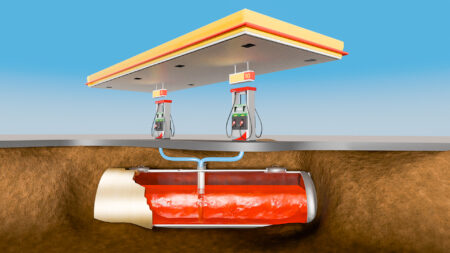Nearly 2 years after Ingenuity’s maiden flight, the helicopter has completed its 50th flight on Mars. Ingenuity quickly surpassed its technology demonstration phase with its first 5 flights before transitioning to its operations demonstration phase which continues today.
How Is a Helicopter Able to Fly on Mars?
Whilst powered flights on Mars have now been proven, flying on Mars is a significant challenge due to its atmospheric pressure. Even though the gravity on Mars is 38% that of Earth’s, atmospheric pressure is less than 1% the density of our home planet. Therefore, generating the necessary lift requires a lightweight vehicle and a rapid rotor blade speed. Ingenuity has both which has enabled its success.

Launch, Landing, and Deployment
NASA’s Ingenuity helicopter successfully launched aboard United Launch Alliance’s Atlas V rocket with the Perseverance rover on July 30, 2020. 7 months later, Perseverance survived the perilous 7 minutes of terror where the spacecraft performed the entry, descent, and landing sequence. The rover landed safely and with Ingenuity tucked under its belly, the helicopter was ready for deployment.
The deployment process required numerous manoeuvres before testing of the helicopter could begin prior to its initial test flights. Testing involved unlocking of the rotor blades as well as spin tests. Once this was complete, Ingenuity was ready for flight.

Flights
Over Ingenuity’s 50 flights, the helicopter has accumulated nearly 90 minutes of flight time having travelled 11.5km. Ingenuity has reached as high as 18m in altitude and has also travelled at a maximum speed of 14.5mph.
The helicopter’s first flight, now called a “Wright Brothers moment”, took off April 19, 2021, reaching an altitude of 3m and lasting nearly 40 seconds. Though most flights have proved to be smooth sailing, flight 6’s anomaly has perhaps been Ingenuity’s most dangerous flight to date. The anomaly involved violent tilting of the vehicle, but it ultimately landed safely.

As Ingenuity has performed more daring flights, the helicopter has been used to scout future areas of interest that NASA’s Perseverance rover could explore. Therefore, the success of Ingenuity has also enabled the success of Perseverance.
Perhaps the most impressive aspect of this endeavour is that Ingenuity was only targeted to perform 5 flights as part of its technology demonstration phase. Flights have travelled further, higher, and faster than many thought realistic. To use an example, flight 25 travelled a record 704m. An impressive feat and credit must go to the talented engineers at NASA JPL and beyond.
Future
Since powered flight on another planet is now proven, this opens new possibilities on Mars and beyond. Ingenuity could be used to scout destinations for future uncrewed or crewed Mars missions. Whilst Perseverance may not be able to access particular areas on Mars, Ingenuity now can. The helicopter is likely to continue flying for some time yet.
Planning for NASA’s next helicopter mission is also well underway with the Dragonfly mission to Titan. Titan is one of Saturn’s moons and Dragonfly is scheduled to arrive there in the mid 2030s.

Featured Image Credit: NASA/JPL-Caltech












